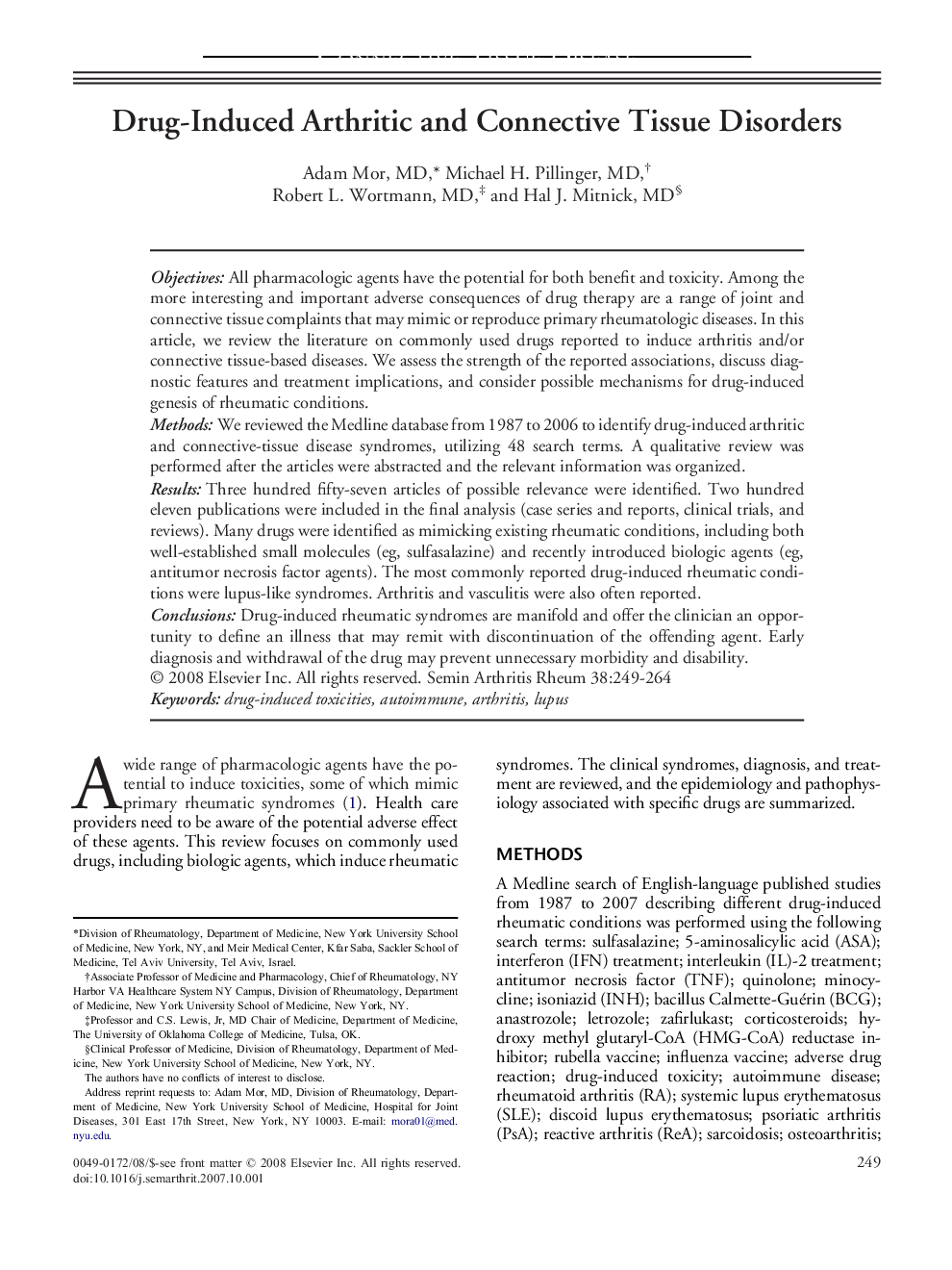| Article ID | Journal | Published Year | Pages | File Type |
|---|---|---|---|---|
| 2771753 | Seminars in Arthritis and Rheumatism | 2008 | 16 Pages |
ObjectivesAll pharmacologic agents have the potential for both benefit and toxicity. Among the more interesting and important adverse consequences of drug therapy are a range of joint and connective tissue complaints that may mimic or reproduce primary rheumatologic diseases. In this article, we review the literature on commonly used drugs reported to induce arthritis and/or connective tissue-based diseases. We assess the strength of the reported associations, discuss diagnostic features and treatment implications, and consider possible mechanisms for drug-induced genesis of rheumatic conditions.MethodsWe reviewed the Medline database from 1987 to 2006 to identify drug-induced arthritic and connective-tissue disease syndromes, utilizing 48 search terms. A qualitative review was performed after the articles were abstracted and the relevant information was organized.ResultsThree hundred fifty-seven articles of possible relevance were identified. Two hundred eleven publications were included in the final analysis (case series and reports, clinical trials, and reviews). Many drugs were identified as mimicking existing rheumatic conditions, including both well-established small molecules (eg, sulfasalazine) and recently introduced biologic agents (eg, antitumor necrosis factor agents). The most commonly reported drug-induced rheumatic conditions were lupus-like syndromes. Arthritis and vasculitis were also often reported.ConclusionsDrug-induced rheumatic syndromes are manifold and offer the clinician an opportunity to define an illness that may remit with discontinuation of the offending agent. Early diagnosis and withdrawal of the drug may prevent unnecessary morbidity and disability.
